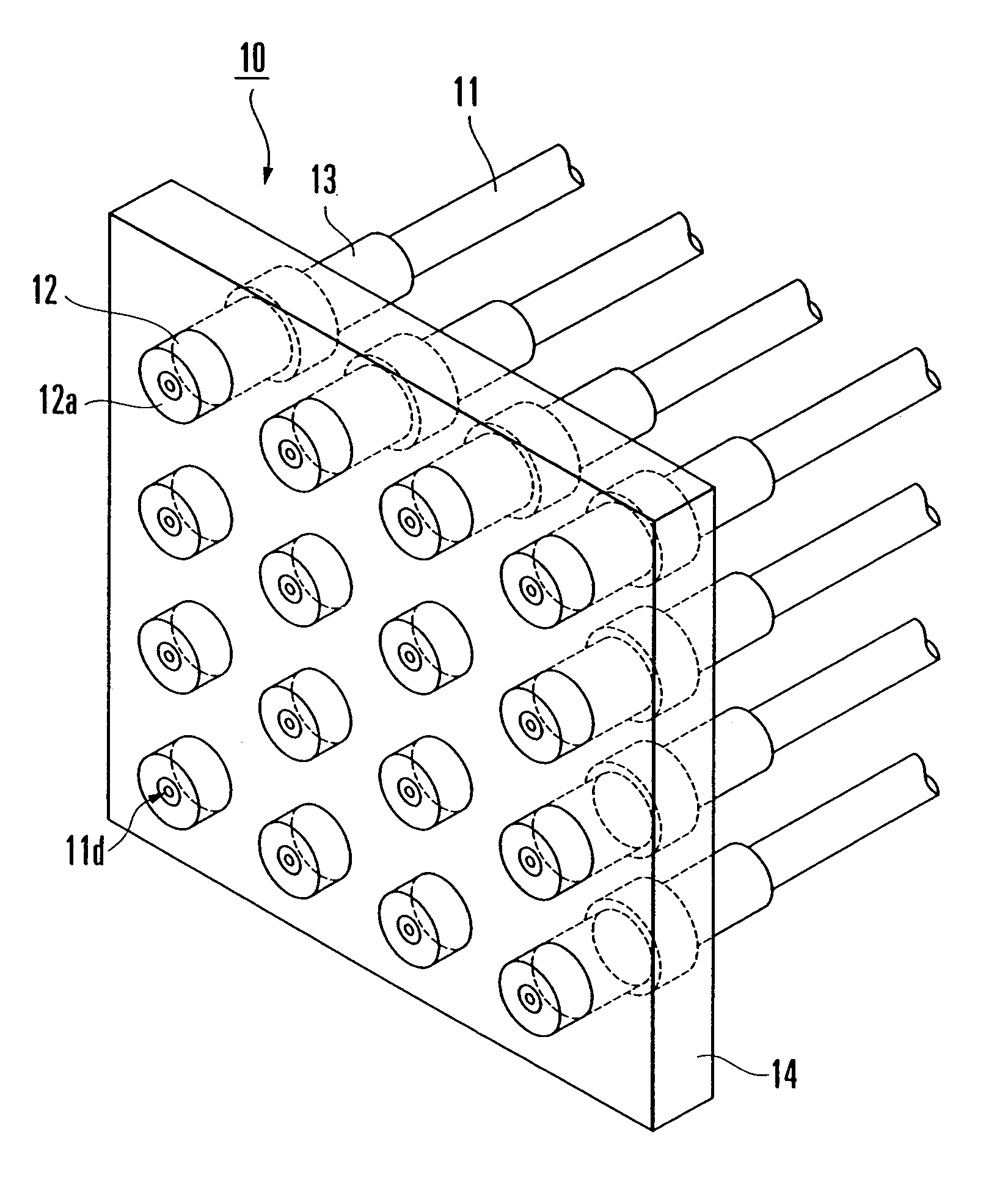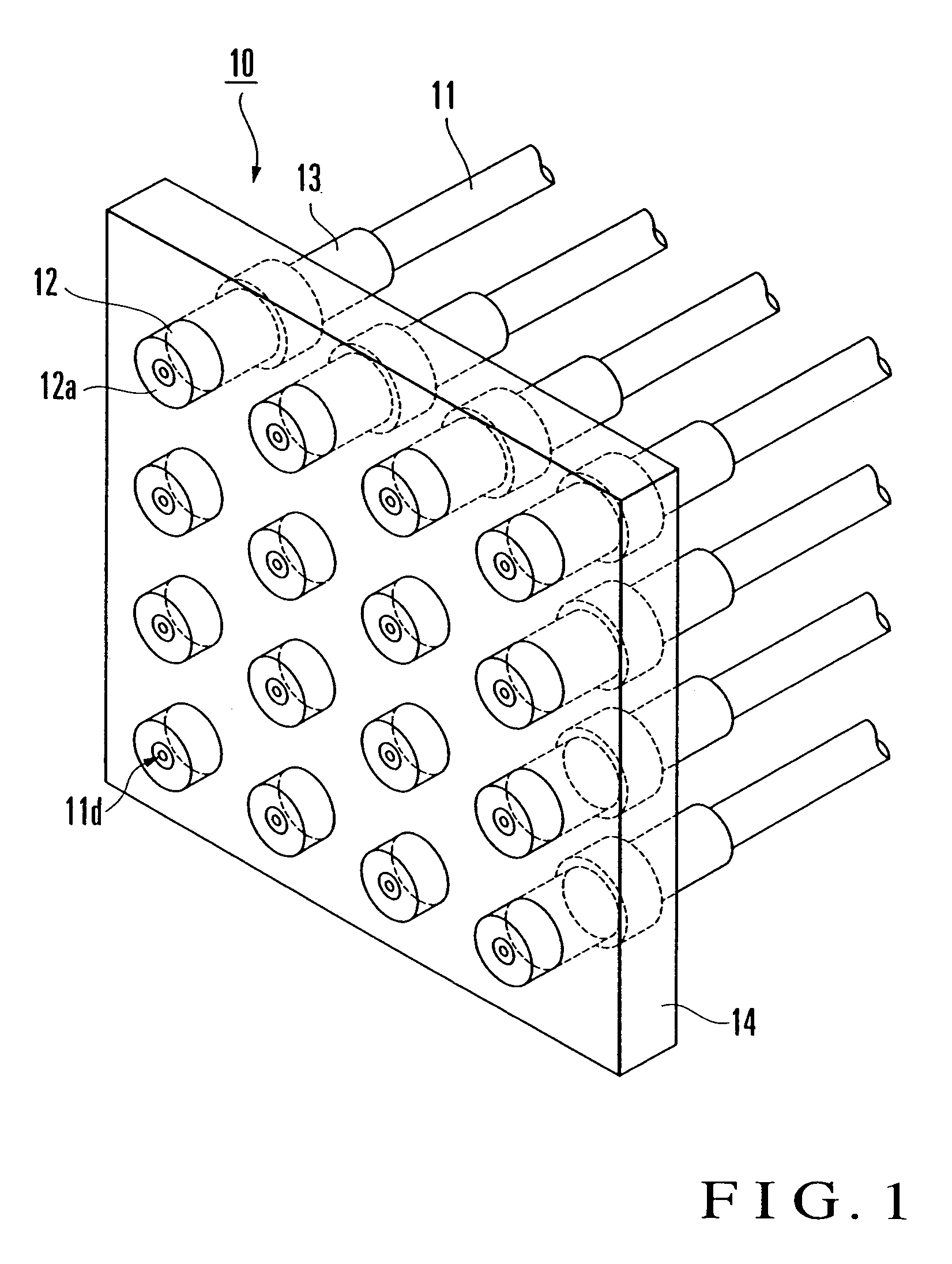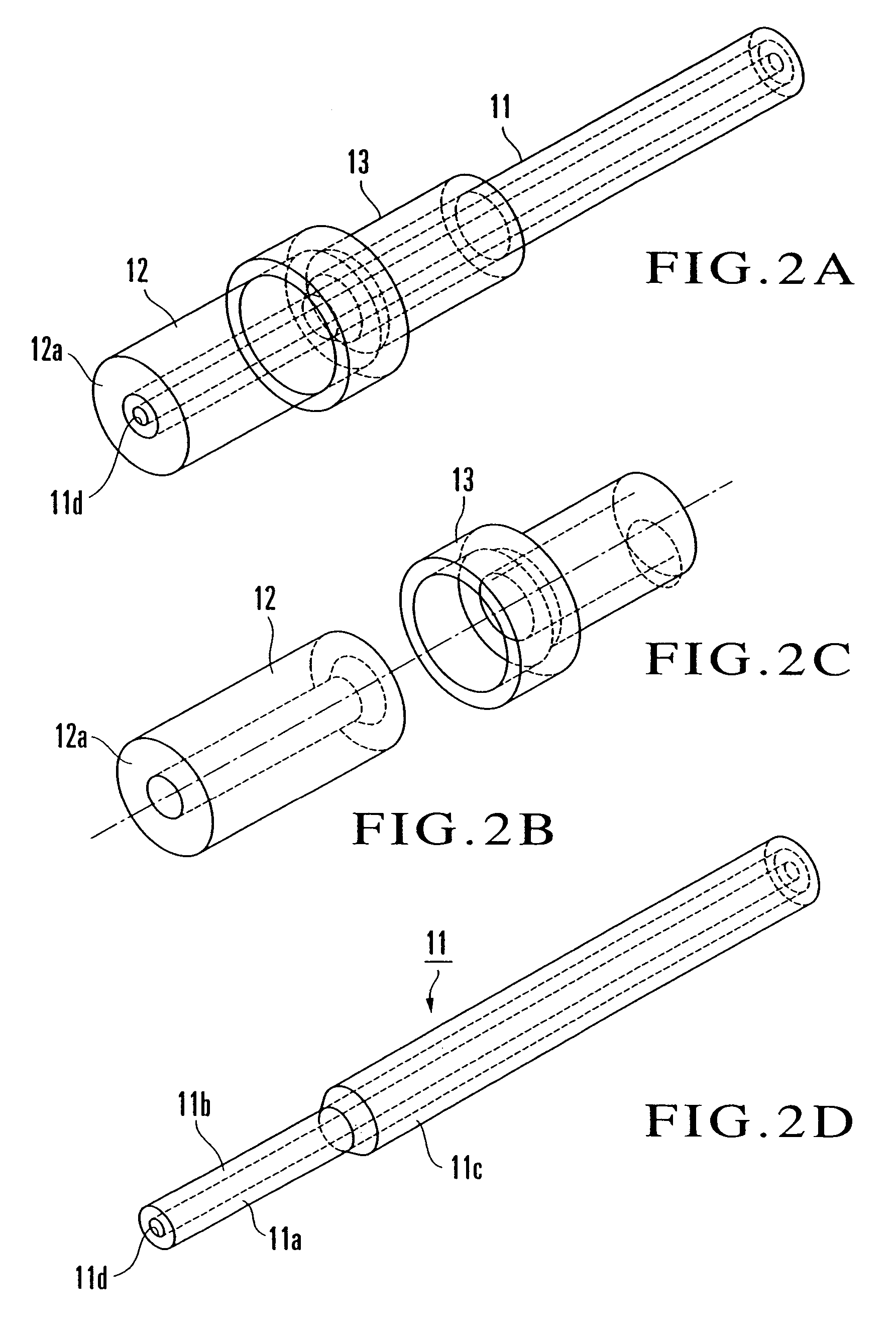Optical fiber array
a technology of optical fiber array and optical fiber, applied in the field of optical fiber array, can solve the problems of increasing cost and power consumption, deteriorating optical channel quality, and devices for converting optical and electrical signals, and achieve the effect of small displacement of optical fibers and low cos
- Summary
- Abstract
- Description
- Claims
- Application Information
AI Technical Summary
Benefits of technology
Problems solved by technology
Method used
Image
Examples
first embodiment
[0036]An optical fiber array according to the first embodiment of the present invention will be described first. FIG. 1 shows the arrangement of an optical fiber array 10 according to this embodiment. The optical fiber array 10 has a plurality of optical fibers 11 arrayed by inserting cylindrical ferrules 12 attached to the distal end portions of the optical fibers 11 into through holes arrayed / formed in an alignment substrate 14. Each optical fiber 11 is fitted in a through hole formed in the central portion of the ferrule 12, and a light incident / exit end face 11d of the optical fiber 11 is exposed on the end face 12a side of the ferrule 12.
[0037]As shown in FIG. 2, a sheath 11c on the distal end portion of the optical fiber 11 is removed, and an exposed waveguide portion constituted by a core 11a and cladding 11b is fitted in the ferrule 12. On the side where the optical fiber 11 is inserted into the ferrule 12, a cylindrical tube 13 for protecting them partly covers the ferrule ...
second embodiment
[0049]An optical fiber array according to the second embodiment of the present invention will be described next. FIG. 5 shows an alignment substrate 24 as a component of the optical fiber array of this embodiment. The same reference numerals as in the first embodiment denote the same parts in the second embodiment, and a repetitive description will be avoided.
[0050]As shown in FIG. 5, each guide hole 14a of the alignment substrate 24 has one pair of arcuated buffer slits 24b which are formed along the periphery of the guide hole 14a. In addition, notches 24c communicating with the guide hole 14a are formed between the end portions of the pair of buffer slits 24b. When the ferrule 12 shown in FIGS. 1 and 2 is inserted into the guide hole 14a, these buffer slits 24b and notches 24c serve as buffer means.
[0051]The alignment substrate 24 having the buffer slits 24b and the like allows the ferrules 12 to be easily inserted into the guide holes 14a. Assume that the outer diameter of the f...
third embodiment
[0055]The third embodiment of the present invention will be described next. FIG. 6 shows an alignment substrate 34 as a component of an optical fiber array according to the third embodiment. The same reference numerals as in the first and second embodiments denote the same parts in the third embodiment, and a repetitive description will be avoided.
[0056]As shown in FIG. 6, the alignment substrate 34 has buffer holes 34c formed along each array of guide holes 14a near the peripheral ends of the alignment substrate 34 in one array direction of the guide holes 14a (the vertical direction in FIG. 6). In addition, the alignment substrate 34 has buffer slits 34b between the adjacent guide holes 14a and between the guide holes 14a and the buffer holes 34c. The buffer slits 34b make these holes communicate with each other. When the ferrules 12 shown in FIGS. 1 and 2 are inserted into the guide holes 14a, the buffer slits 34b and buffer holes 34c serve as buffer means.
[0057]In the alignment ...
PUM
 Login to View More
Login to View More Abstract
Description
Claims
Application Information
 Login to View More
Login to View More - R&D
- Intellectual Property
- Life Sciences
- Materials
- Tech Scout
- Unparalleled Data Quality
- Higher Quality Content
- 60% Fewer Hallucinations
Browse by: Latest US Patents, China's latest patents, Technical Efficacy Thesaurus, Application Domain, Technology Topic, Popular Technical Reports.
© 2025 PatSnap. All rights reserved.Legal|Privacy policy|Modern Slavery Act Transparency Statement|Sitemap|About US| Contact US: help@patsnap.com



